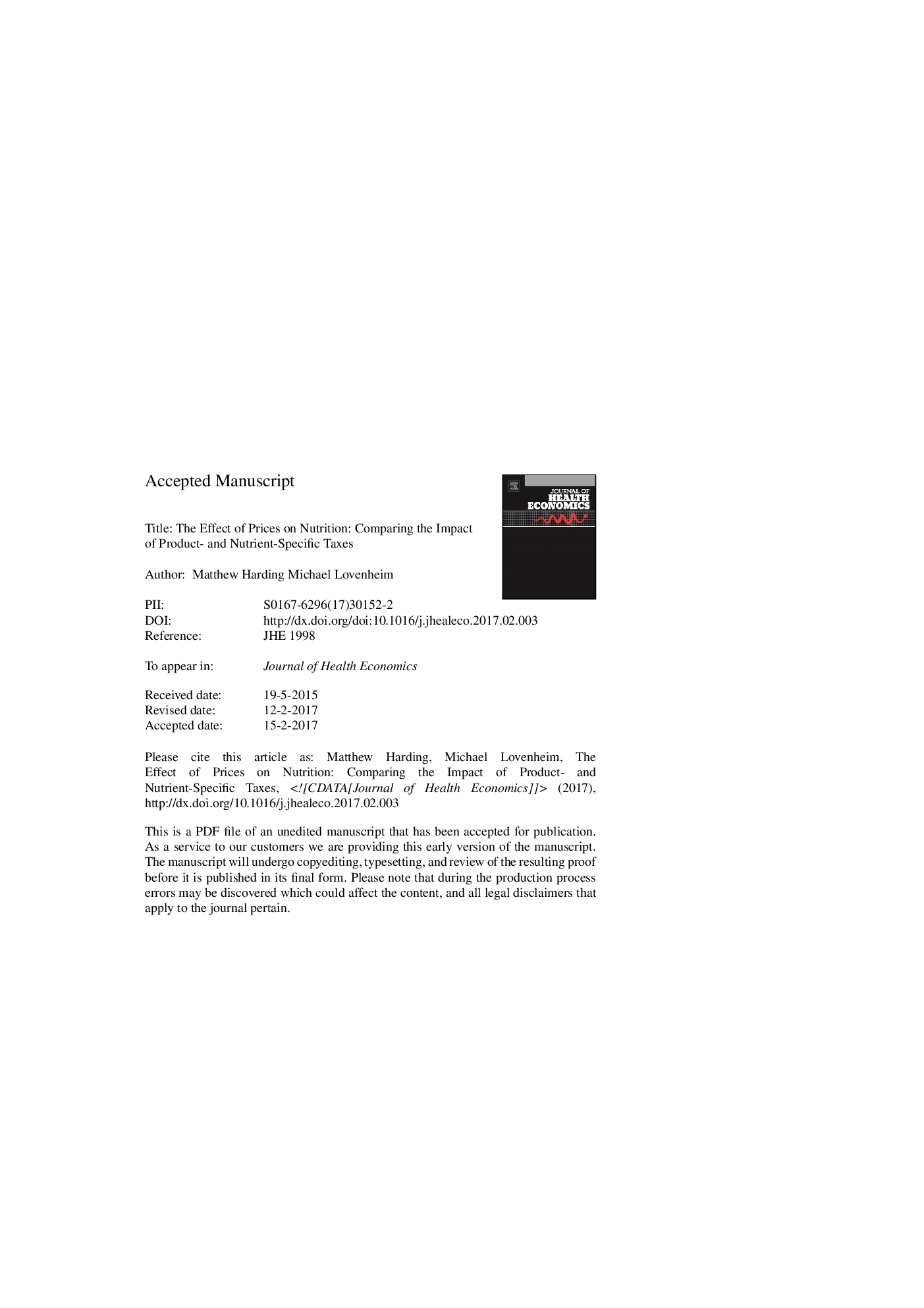| Article ID | Journal | Published Year | Pages | File Type |
|---|---|---|---|---|
| 5100774 | Journal of Health Economics | 2017 | 46 Pages |
Abstract
This paper provides an analysis of the role of prices in determining food purchases and nutrition using very detailed transaction-level observations for a large, nationally-representative sample of US consumers over the period 2002-2007. Using product-specific nutritional information, we develop a new method of partitioning the product space into relevant nutritional clusters that define a set of nutritionally-bundled goods, which parsimoniously characterize consumer choice sets. We then estimate a large utility-derived demand system over this joint product-nutrient space that allows us to calculate price and expenditure elasticities. Using our structural demand estimates, we simulate the role of product taxes on soda, sugar-sweetened beverages, packaged meals, and snacks, and nutrient taxes on fat, salt, and sugar. We find that a 20% nutrient tax has a significantly larger impact on nutrition than an equivalent product tax, due to the fact that these are broader-based taxes. However, the costs of these taxes in terms of consumer utility are only about 70 cents per household per day. A sugar tax in particular is a powerful tool to induce healthier nutritive bundles among consumers.
Related Topics
Health Sciences
Medicine and Dentistry
Public Health and Health Policy
Authors
Matthew Harding, Michael Lovenheim,
